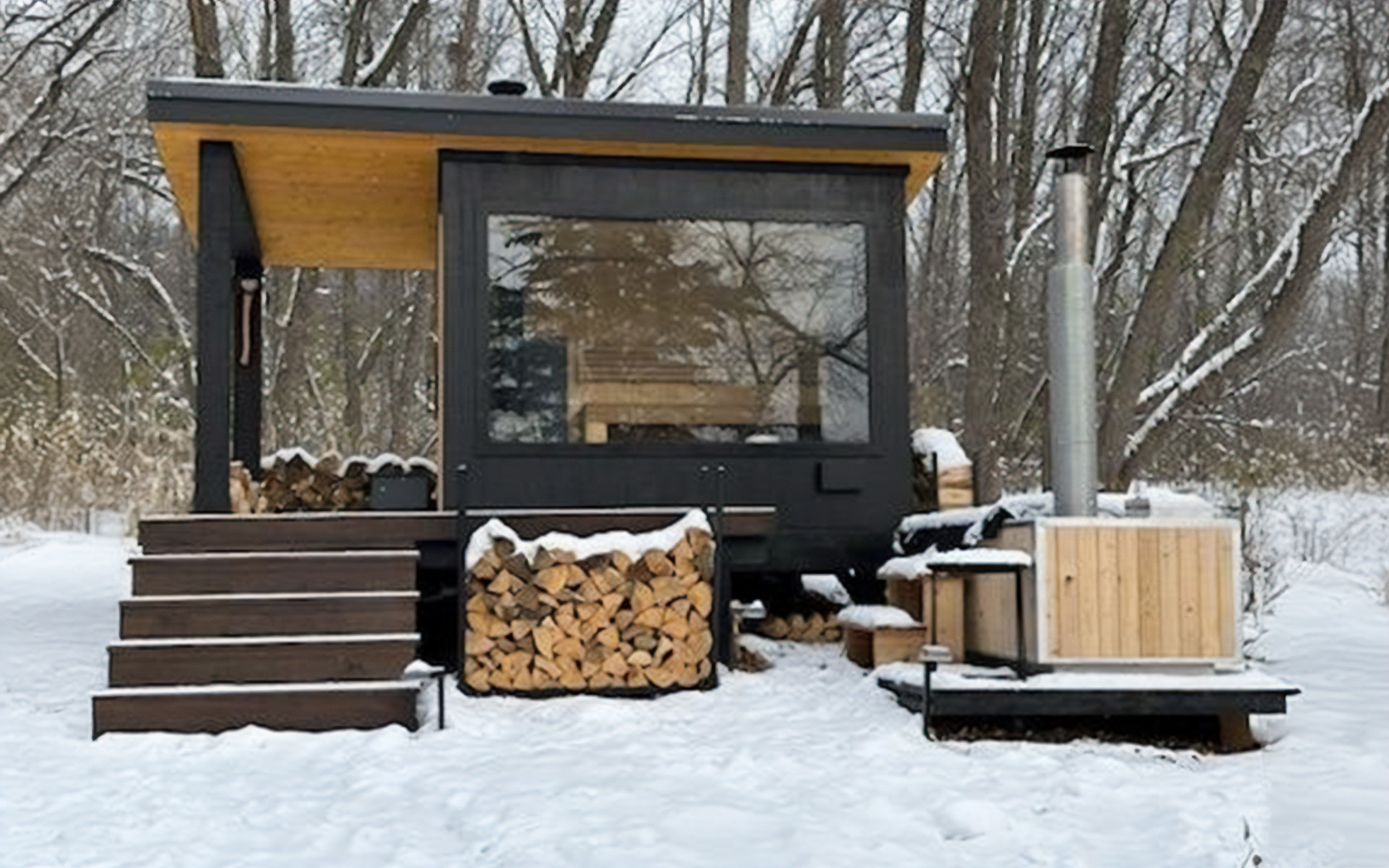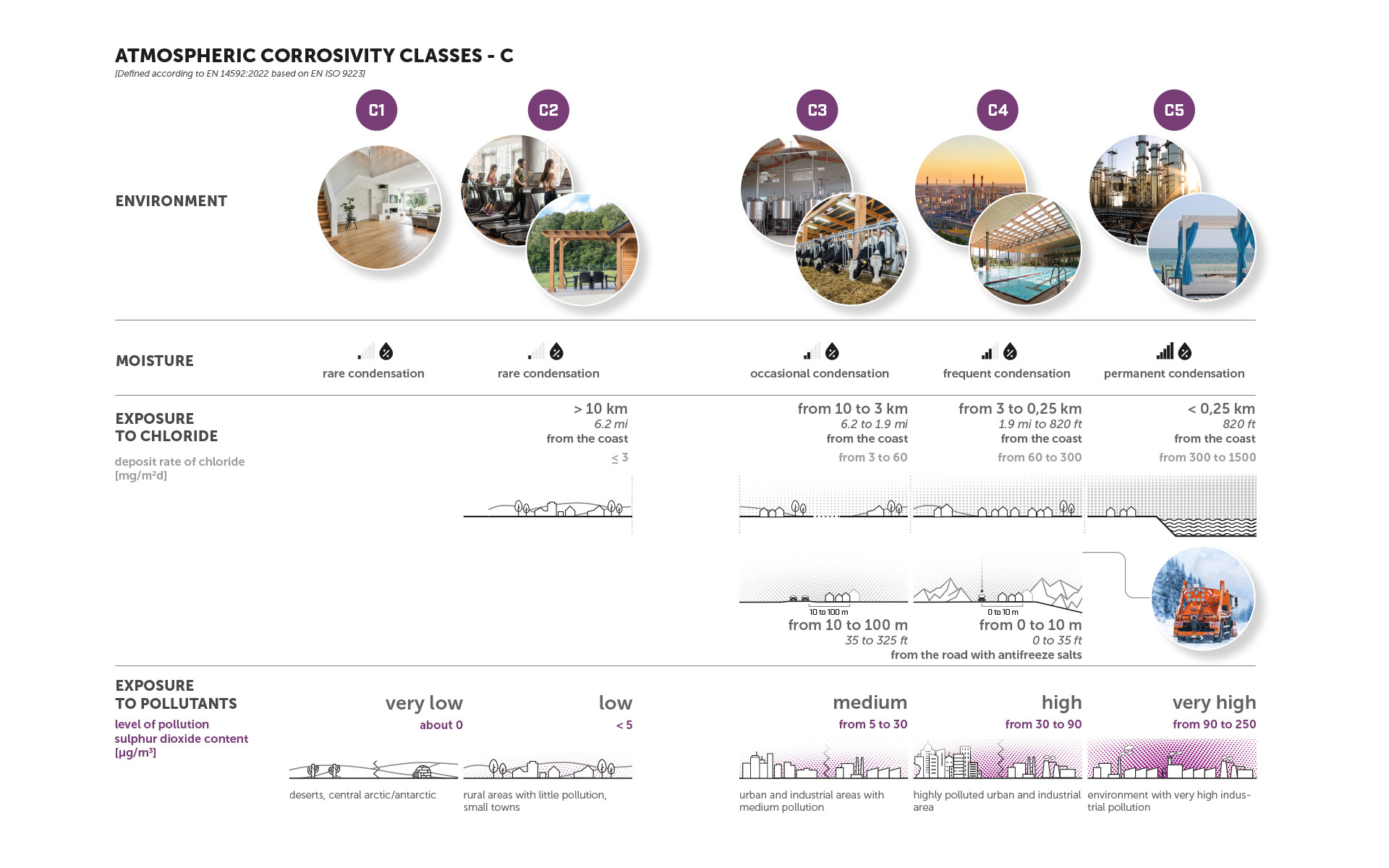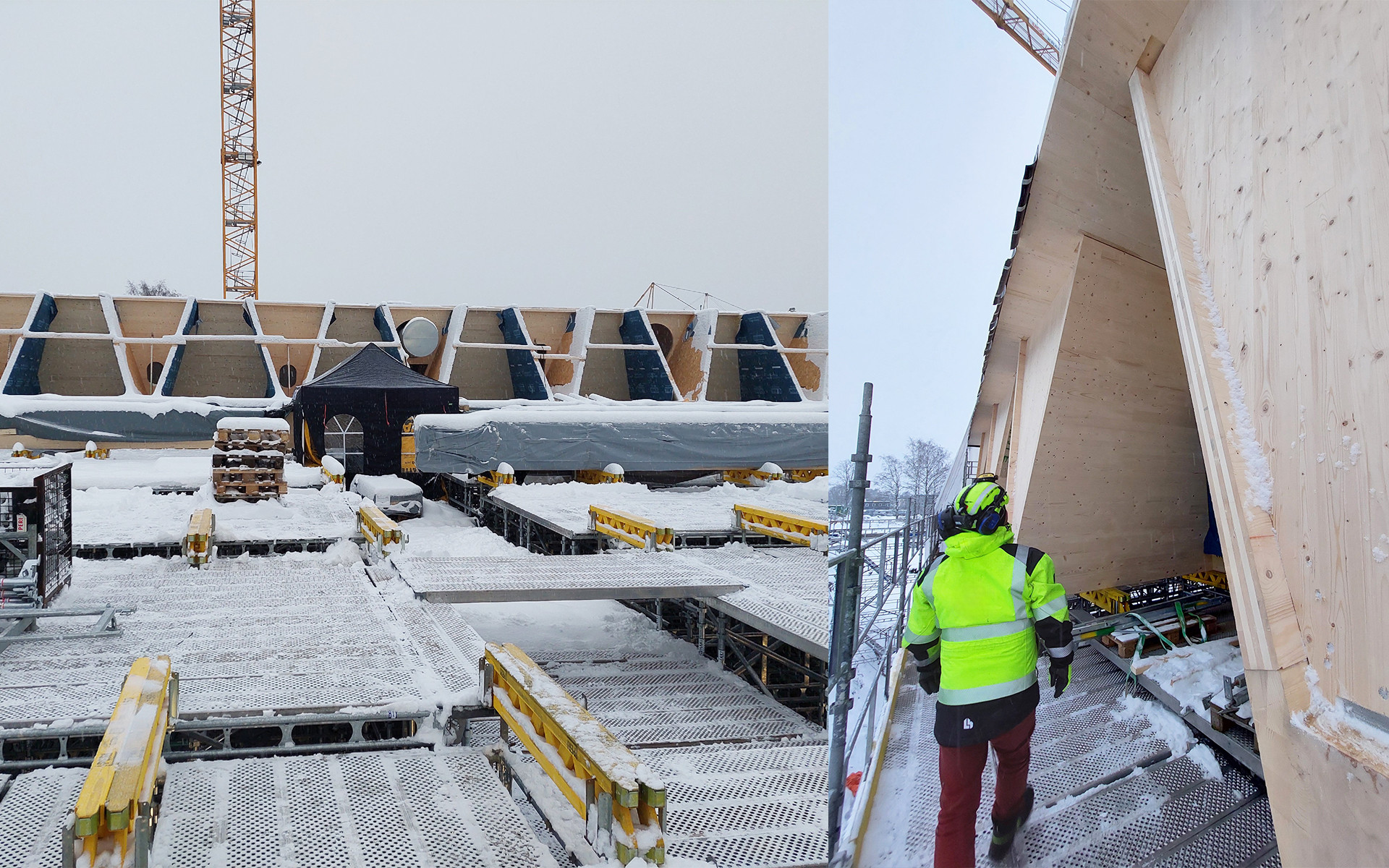
Corrosion of screws in swimming pools and saunas
The construction of timber structures in settings such as swimming pools and saunas poses a critical issue not to be underestimated: corrosion of screws and fasteners.
No matter whether the timber is used for trusses or cladding, pillars or design elements, the screws that enable their installation must be decay-proof.
In fact, places such as swimming pools and saunas are characterised by high humidity, the presence of chlorine and high temperatures, ideal conditions for metal corrosion. This phenomenon can quickly compromise the structural integrity of buildings, jeopardising the safety and durability of timber structures.
So what are the main causes of corrosion in these contexts and the most effective strategies to prevent it?

The root causes of corrosion: why are screws vulnerable? Humidity and chlorides: a destructive duo.
Spaces such as spas, swimming pools and saunas are known for their high levels of suspended humidity: water in the air tends to condense on metal surfaces, originating an environment conducive to corrosion.
Under these conditions, chlorine used as a disinfectant in swimming pools becomes particularly aggressive toward metals.
When chlorides accumulate on the surfaces of steel screws, they trigger chemical reactions that accelerate material degradation. This type of corrosion, commonly known as uniform corrosion, can gradually weaken screws, but in some cases it can evolve into pitting corrosion, which is a process that creates small holes in the metal and makes it vulnerable to sudden failure.
Stress Corrosion Cracking (SCC): a concealed enemy
Another less visible, but equally dangerous problem is Stress Corrosion Cracking (SCC). This occurs when a mechanically stressed metal is exposed to a corrosive environment, for example in swimming pools containing chlorides.
The microcracks forming in the metal can slowly grow over time until they cause sudden and catastrophic failure. Stress Corrosion Cracking is particularly insidious as it can develop without obvious signs until failure occurs, posing a serious risk to the structural integrity of the construction.
Galvanic corrosion: when metals do not cooperate
Another type of corrosion to be considered in wet environments is galvanic corrosion. This phenomenon occurs when two different metals are in direct contact and immersed in an electrolyte, such as swimming pool water.
Galvanic corrosion accelerates the degradation of the less noble metal, causing screws and other metal fasteners to deteriorate rapidly. Especially common when metals are not correctly chosen in relation to each other, this type of corrosion can lead to a significant reduction in the service life of structures.
Atmospheric corrosivity classes: influencing factors.
Corrosion caused by the atmosphere depends on relative humidity, air pollution, chloride content and whether the connection is internal, external protected or external.
Exposure is described by the CE category which is based on category C as defined in EN ISO 9223. Atmospheric corrosivity only affects the exposed part of the connector.

Effective solutions: how to protect screws from corrosion
High-strength stainless steel: the first line of defence
Selecting the right material is crucial for protecting screws in highly corrosive environments. High-strength stainless steel is an excellent option for combating corrosion in outdoor environments.
Stainless steel screws are designed to resist uniform corrosion and also more insidious forms such as pitting corrosion, but not stress corrosion cracking.
In fact, most common stainless steels offer an excellent balance between mechanical strength and corrosion protection, yet when chlorine is present in closed environments, they run the risk of Stress Corrosion Cracking (SCC).
Protective coatings: an advanced barrier
With regard to screws and fasteners, the new generation of protective coatings plays a crucial role in corrosion prevention.
Rothoblaas C4 EVO coating is an example of advanced technology that offers excellent protection against corrosion in areas with high humidity and chemical exposure.
This coating forms a barrier that prevents chlorides and moisture from penetrating the metal underneath, reducing the risk of corrosion.
Screws with the special multilayer C4 EVO coating with surface treatment of epoxy resin and aluminium flakes are perfect for outdoor application and in aggressive environments.
With this coating, screws can keep their structural integrity over time, providing superior durability compared to uncoated screws.

The SCI HCR screw from Rothoblaas: the ultimate solution
For applications where maximum corrosion resistance is essential, the SCI HCR screw from Rothoblaas is the ultimate solution.
This screw is made of a special super austenitic stainless steel alloy with very high corrosion resistance, designed to withstand the most extreme conditions, such as those found in swimming pools and saunas.
The SCI HCR screw offers exceptional protection against chlorides and moisture, ensuring that timber structures remain safe and undamaged over time.
It is a screw with an advanced design that makes it perfect for indoor application in swimming pools and saunas. Its chemical composition is also resistant to Stress Corrosion Cracking, which is a threat to all other types of stainless steel screws.
With SCI HCR, Rothoblaas provides a screw that is not only resistant to corrosion, but also ensures a long service life, reducing the need for frequent maintenance and replacement.

Design and preventive maintenance: never underestimate the importance of care
Together with the choice of materials, careful design and regular maintenance are essential to prevent corrosion.
Designing structures that minimise moisture accumulation and facilitate ventilation, reducing an environment favourable to corrosion, is crucial. In swimming pools, for example, proper ventilation can help reduce moisture levels and chloride concentrations in the air, decreasing the risk of corrosion.
In addition, a maintenance programme that includes regular inspections of screws and fasteners is essential. Early identification and replacement of damaged screws can prevent serious structural problems and ensure the long-term safety of structures.
To further guarantee the durability not only of the fasteners but also of the timber itself, apply a membrane that reduces the permeability of the building's perimeter and foundation structures: BARRIER ALU NET SD1500 is the ideal solution for vapour flow control in very humid environments such as wellness centres, indoor swimming pools and industrial laundries, in order to safeguard stratigraphies. In addition, the aluminised layer reflects heat and thus improves the retention of temperature over time.

Corrosion is not inevitable
By using appropriate materials, such as high-strength stainless steel, applying advanced protective coatings and conscientious design, corrosion risks can be mitigated.
By implementing these solutions, it will not only prolong the life of structures, but will also ensure the safety of users, protecting the investment in the long term.
The Rothoblaas SCI HCR screw, in particular, is one of the most effective solutions to combat corrosion of fasteners in extremely aggressive environments. To find out how SCI HCR can improve the corrosion resistance of your construction, visit this link and explore the features that make it the ultimate choice for your needs.
All rights reserved
Technical Details
- Country:
- Any
- Produkty:
- SCI HCR BARRIER ALU NET SD1500


